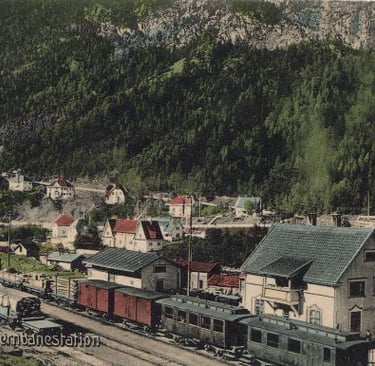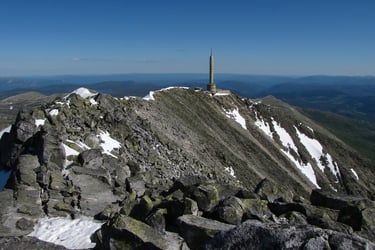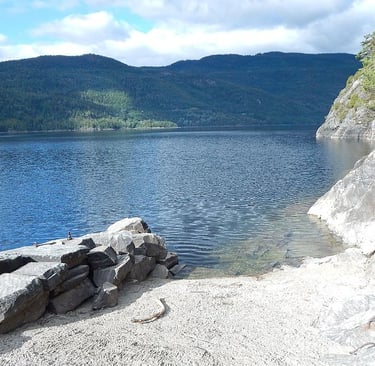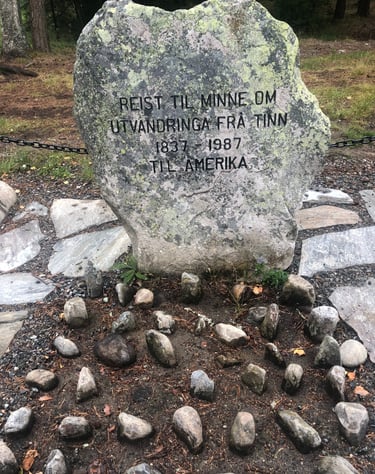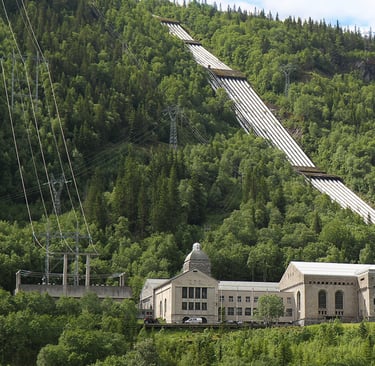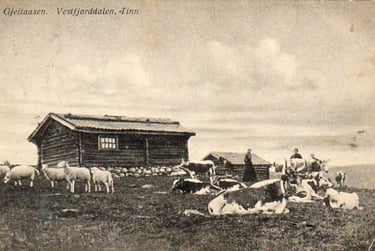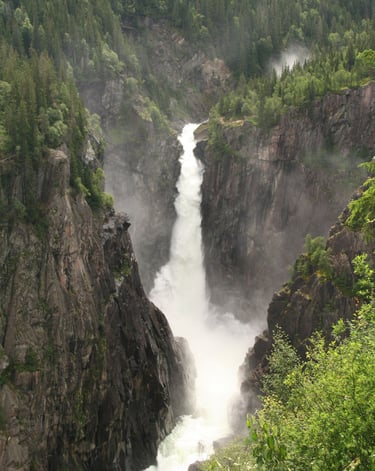
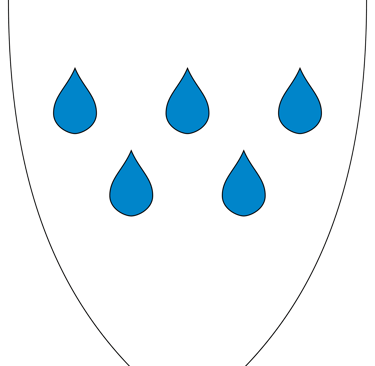
Tinn Kommune
Pop. 5533; Area 2045 sq. km. (1270 sq. mi.)
Church Parishes: Rjukan and Tinn
Historic Churches: Dal, Rjukan, Atrå, Austbygde, Hovin, Mæl
The municipality of Tinn lies along the northeastern border of Telemark fylke, where the Blefjell and Vegglifjell mountain ranges separate it from Buskerude Fylke. Along Tinn's western border, the moors of Hardangervidda plateau stretch. Approximately 30,000 people climb the iconic Guastatoppen mountain's peak on the southern border. At 1,883 meters tall, Mt Guasta is the tallest mountain in Telemark. On clear days, its summit offers views of around one-sixth of Norway, including one of Europe's deepest lakes, Lake Tinnsjø, directly to the east.
Although Lake Tinnsjø may have been the inspiration for the kommune's name that is rooted in the Old Norse word meaning "small lake," Tinn's modern coat of arms is inspired by a different water feature: its five rivers and the Hydroelectric power plant built near Rjukan Falls in 1906. Before the construction of the Vemork power plant by Norsk Hydro to power a new method of fertilizer production, the valley that gets no sunlight from September to March was scarcely populated. The town of Rjukan, which was established due to these industrial developments, is still the administrative center of the kommune and the center of the Rjukon-Notodden UNESCO World Heritage Site.
The area's history is intertwined with one of the most significant events of World War II: the Norwegian heavy water sabotage. The Vemork plant gained international attention due to its heavy water production, a byproduct of electrolysis, and a vital component in nuclear research. German forces, occupying Norway during the war, sought to control the heavy water production at Vemork. However, a group of Norwegian resistance fighters, including notable figures such as Joachim Ronneberg, successfully executed Operation Gunnerside in 1943, sabotaging the plant and disrupting Germany's nuclear ambitions. This daring mission, celebrated as one of the most audacious acts of sabotage in the war, significantly impacted history and is commemorated as part of the Rjukan-Notodden Industrial Heritage Site's legacy.
In 1913, a local newspaper printed the idea of mirrors on the mountainsides to bring sunlight into the newly designed city. The valley's residents endured winter darkness with no reprieve until 1928, when Norsk Hydro opened the Krossobanen aerial tramway as a gift. The cable car lifts riders 498 meters into the sunlight. The narrow road that was created underneath it during construction was used by the WWII saboteurs as an escape route. One hundred years later, three giant mirrors are installed on the mountainsides, and they redirect sunlight down into the town square, allowing residents to enjoy natural sunlight during the dark winter season. The mirrors track the sun's movement throughout the day to ensure maximum efficiency. The project has improved the quality of life for locals and has also become a tourist attraction, drawing visitors worldwide to witness this innovative solution firsthand. The mirrors initiated as a modern art installation are yet another unique technological innovation characteristic of the area.
Notable People from Tinn:
Knut Haugland (1917-2009) was a WWII resistance fighter and later a member of the Kon-Tiki expedition. He was the director of the Norway Resistance Museum and the Kon-Tiki Museum, both in Oslo.
Gunnar Sønsteby (1918-2012) was an accountant turned WWII resistance fighter. He became the most highly decorated citizen in Norway for his extensive heroic achievements.
Knut Luraas (1782 -1843) was a highly influential Hardingfele fiddler.
Thomas Luraas (1799-1886) was one of the most prominent rose painters of his time.
Snowshoe Thompson (1827-1876) immigrated to the US as a boy and made skiing popular in the Sierra Nevadas with his expert navigation through snow-covered mountains for winter mail delivery.

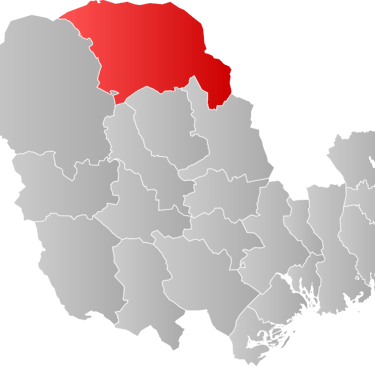
Bygdebøk and library holdings for Tinn
For questions or research requests contact contact@telelagetofamerica.com


